

Electric vehicles (EVs) initially faced a significant amount of scepticism, like much modern technology. People long ago had misconceptions about the concept and rejected it as nothing more than a PCO that wouldn’t work. When we fast-forward to 2022, several of the most well-known brands in the automotive sector are already developing their EV possibilities. The automotive industry places a lot of emphasis on adaptability, and those who can’t keep up fall behind. At the moment, EVs are the primary priority in many ways.
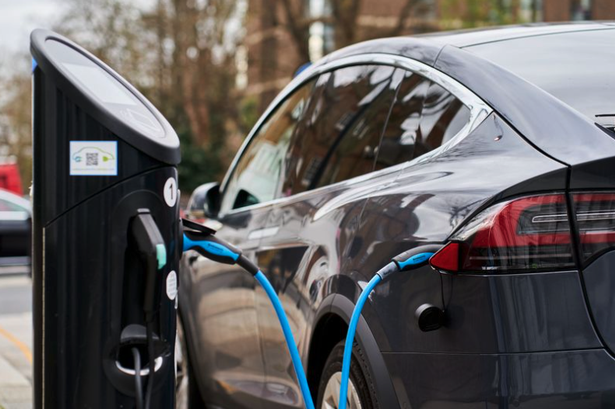
Despite this, they aren’t generally thought of as a wonderful option, regardless of whatever the professionals might have you believe. However, several areas are cloaked in mystery, which may use some actual clarification. The following are some myths about EVs and PCO:
EVs Are Not Cost-Effective for PCO
One of the biggest myths about electric vehicles is that they are expensive to drive on a regular basis, especially for PCO drivers. Conversely, there are several ways that a PCO with an EV is significantly less expensive than a car that only uses petrol. There are many PCO car rental options available that provide you access to some of the most in-demand EVs on the market, so you are not required to buy the car outright.
Congestion charges, which not only put major stress on your revenues but also make it difficult for businesses to find customers, may be one of the highest expenses for PCOs generally. Congestion fees for EVs are waived until 2025 in the UK in an effort to encourage a change toward environmentally beneficial practices. The mileage you obtain from an EV easily approaches and frequently exceeds that of petrol models, and strategic charging sessions provide excellent value. Additionally, you may charge your device at home or at a station for less money than you would at a station in other regions of the UK.
Fewer Charging Stations
One of the most frequent concerns among those studying EV options when they’re considering PCO vehicle rental in Chelsea is whether there will be enough EV charging stations available. While placing a charging station at home is always a possibility, it might not be perfect for someone obtaining a PCO car to rent, especially if they live in an apartment where installation may be difficult. People are compelled to depend on the EV charging stations established by many of the larger companies in such a situation.
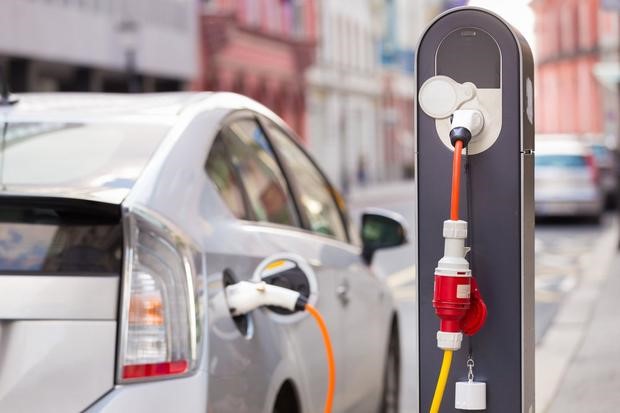
EVs Require Daily Charging
When you travel with a PCO vehicle rental in London, you won’t always need to charge your EV every day, which may surprise many people. The latest electric vehicles generally offer outstanding mileage, and a full charge will typically last for 160 kilometres. Although this figure is great, it just includes the base variations. Top-of-the-line packages will typically provide you 230+ miles, which may seem excessive when compared to the 100–150 miles that the typical Uber driver in London travels each day.
If that wasn’t enough, EVs perform far better in cities because of their regenerative braking. Due to the cumulative effect of braking throughout the day and better mileage, each time you apply the brakes, a specific percentage of the battery in the car is charged. Although you won’t get a complete top-up, it does make a significant difference. You may simply use a PCO car rental in West London for a whole day by modifying your driving technique.
EV Batteries Lose Range
Another prevalent claim made by petrol heads is that EVs’ dependence on electric batteries is their fatal flaw since they suffer severe deterioration over time. Contrary to popular assumption, petrol engines don’t have the same problems because they don’t depend on batteries. In a KIA study, the company’s various Soul models were tracked for battery degradation over a period of three years, and it was found that just 1% of their total capacity was lost. It’s evident that EV batteries are reliable and have exceptional longevity, making them important for PCO car rental in Edmonton.
Manufacturers take this seriously and typically offer a battery warranty of 7 years or 10,000 miles. One of the main reasons PCO rentals are expanding its selection of EVs is because they can survive the rigorous usage that a car can experience. This durability and confidence. To sweeten the deal, you also have the option of replacing the battery, giving you access to a good-as-new experience and the chance to once again achieve the best mileage.
EVs are inadequate in the UK winters.
This is a myth that contains some aspects of reality. In a standard petrol vehicle, you need a lot more fuel in the winter since the engine needs to warm up to operate correctly, which raises fuel consumption and reduces mileage. The overall mileage of an electric vehicle will decrease by 5 to 8%, and this is also true for gasoline-powered vehicles. If you do the math, you’re still only getting around 145 of the 160 miles that you’d get in ideal, warmer weather. This figure remains comfortably within the permitted range for the usual PCO car rental in Croydon.

While you might be sacrificing some mileage, you have access to an extensive network of conveniently located electric charging stations. If your battery is running low, you can always go to a charging station and receive the extra juice you need to keep moving. With some of the most precise mileage tracking systems available, EVs can assist you to avoid running out of fuel before you get to the charging station.
Charging Takes Too Long
This myth is supported by some factual data, like many others. For a variety of reasons, home chargers are slower, so it wouldn’t be a good idea to depend on them for a quick top-up while you’re on your lunch break. Your vehicle battery may need to be fully charged for up to ten hours. Many people do not consider the fact that you must charge your vehicle overnight since they view the advantage of cheaper costs provided by your home charger as positive.
When you depend on public charging stations, this becomes a myth. You can obtain variable charge rates from them based on their specifications. Many of them can recharge your car’s battery the same way you recharge your smartphone, giving you 70% or more range in 30 minutes. Anyone with a PCO car in hire Hammersmith will benefit financially from this, enabling them to maintain a specific quantity of power in between breaks. To maximise the use of an EV’s long-range and rapid charging speeds accessible at public stations, people can chain charging periods alongside their travels.
EVs are slower than fuel vehicles.
This claim deserves further discussion and has to be clarified in order to avoid confusion. Many fuel vehicles can travel at and maintain higher top speeds. They now lose out on the fastest tracks due to the way electric cars distribute power. But in reality, unless you’re on a race track and not in typical London traffic, you could not be reaching such speeds. They are worthless for the average person trying to reduce fuel usage because they are not legal or sustainable on most roads.
EVs Are Unsafe
This is a claim that typically depends on scepticism and rumours, unlike other myths that may contain some element of reality. EVs, go through the same review and safety inspection process as petrol cars. Many services, such as Uber, are fairly severe in the UK, not allowing vehicles that do not receive the proper safety rating through NCAP. Considering that EVs are the destiny of the automotive industry, they come with a shitload of features, many of which are geared toward making vehicles safer.
Several vehicles, such as the Volkswagen ID.3 and MG5, have received 5-star safety ratings, making them some of the safest options available. To rent a PCO vehicle in Chelsea, it’s essential that your client feels secure at all times, and an EV offers all the necessary capabilities to provide the high-quality service they demand from you.
Arrow Car Hire may be of interest if you’re wanting to rent a PCO vehicle. Whether you’re looking for petrol, diesel, or electric vehicle options for Uber car rental, we have a wide range of options in our selection of PCO cars to rent. We provide PCO-licensed car rental in London, serving a range of locations like Ilford, Wembley, Ealing, Slough, Edmonton, and Harrow.

You must obtain a PCO licence from TFL in order to start using Uber or other similar services like Bolt, Ola, or FREE NOW and fulfil the standards for Uber drivers. Passing the TFL topographic test and demonstrating that your English is sufficient to be an on-demand driver by passing the TfL English test are also requirements for obtaining that licence.

There is no longer a way to prove that you possess the required language skills if TFL previously accepted adequate proof from a language centre. This implies that you must really take and pass the TfL English language test.
What is the TFL English Test?
Drivers from non-English-speaking countries who want to apply for or renew a PCO licence must take the TfL English test. Transport for London (TFL) requires it as a necessary step, and it indicates that you are proficient in speaking the English language.
IMPORTANT: TFL accepted verification in the form of documents up until October 2021, such as language certifications from one of their authorised institutes. Since then, though, modifications have been made that require drivers to pass the actual examinations.
Who Needs to Pass the TFL English Test?
As an on-demand driver, safety is essential for both you and your passengers, putting aside the fact that you can’t obtain the PCO licence without passing the English test. However, it’s also necessary that you can read and comprehend information and communicate in any circumstances that can arise in your career as an on-demand driver, including an accident. Good communication will make interactions a lot smoother.
Changes made after October 1, 2021, influence:
PCO drivers who registered for a PCO licence between October 20, 2021, and April 1, 2023, or whose documented evidence of language was rejected, must pass the TfL English test by March 31, 2023. The test must be taken and passed by 30 September 2022 for those who applied before 1 October 2021.
IMPORTANT: Starting 31 March 2023, whether applying for a new licence or renewing an existing one, all PCO drivers will be required to complete the test before being licenced by TfL.
What is included in TFL English exam?
The SERU (safety, equality, and regulatory requirements) evaluation is used by TFL to assess drivers’ comprehension of the standards as well as their general reading and writing abilities.
There are two parts to the test.
Speaking and listening
The conversation with the examiner lasts for 15 – 20 minutes. While the exam is conducted at the TFL office, it is actually performed over a secure video or telephone link with the help of PeopleCert, a TfL service partner. You must receive at least 60 out of a possible 100 points to pass the test.
Five sections make up the spoken evaluation:
Writing and Reading
This is a written component that evaluates not only the language itself but also how well drivers comprehend safety, equality, and legal obligations. It consists of multiple-choice questions and sentences that need missing words to be completed.
The PHV Driver Handbook served as the basis for this test, which includes the following subjects:
Multiple-choice questions and inserting missing words into phrases are part of the reading and listening portion.
How Much Fee for TFL English Test?
The first time you take the test, it costs £36. The fee for retaking the test is £16.
Can I retake the TFL English test?
Yes. You can retake the exam if you don’t pass the first time.
Where can I take the TFL English test?
One of the two TFL locations in Baker Street or West Kensington is where you can take the test.


When you rent a Mercedes, you give yourself the opportunity to travel in elegance and luxury at all times. You can discover the ideal size and type of automobile to fit your requirements from a luxurious variety. You have a full choice from family-sized to sports models in our excellent variety of cars, all of these are backed by a reputable brand. With these accessible and reasonably priced solutions, you may travel in comfort. Continue reading to learn more about these fantastic vehicles.
A Wide Variety of Models
Car rental companies offer a range of vehicles to satisfy your specific requirements. The comfort and stylish appearance of these cars are delightful to look at in addition to the fact that they have cutting-edge interiors. These cars are manufactured by some of the world’s most reputable companies and are well-known all over the world. This concentration produces a ride that is reliable and safe for you to enjoy each and every day. You can select the ideal model for you from the AMG S500 to the G63.
Long-Distance Travel
Drive across the country in your high-performance car for the maximum adrenaline and to take in the breathtaking views. These cars are the go-to companions for road trips and vacations because they can consistently travel large distances rapidly. The vehicles are also made to be fuel-efficient. Consequently, you will save money on fuel and contribute to the effort to fight global warming. These cars provide you with comfort and luxury with every turn of the wheel, making them perfect for both city travel and country driving.
Cost-effective Prices
Most importantly, you can afford these luxury car rentals. Like luxury vehicles, you might believe they are expensive and out of range, but with our collection, you have a variety of options to suit any budget. You can be certain to arrive in classic elegance if you’re attending a special event or travelling on business trips. We offer rental cars at reasonable rates, but they also offer a number of better profitability. Customers can also take advantage of their discounts. Travelling is made simple thanks to this convenience, especially if you want to avoid the hassle of taxis and crowded, complicated public transportation.
You could experience comfort, luxury, and safety when you rent a Mercedes for your trip or for business. When you engage in our excellent services, we can provide you with top-notch vehicles to transport you to your location in opulent style.

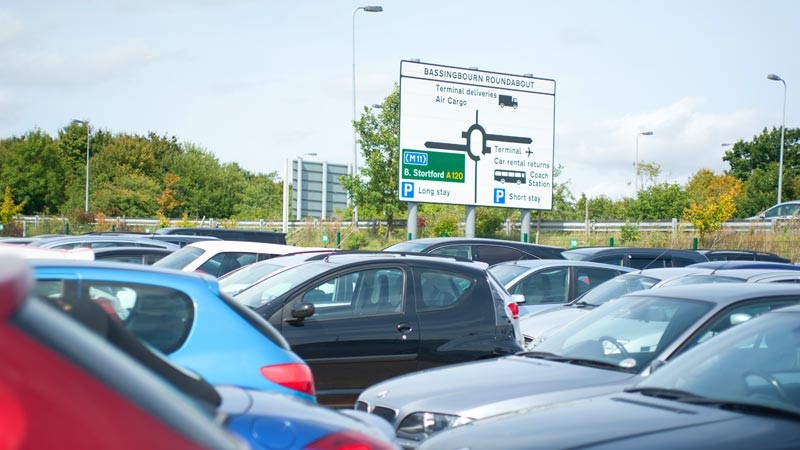
Consider calling an Uber or a Bolt and being greeted by a vehicle that looks dangerous, is unpleasant, and offers no comfort. People are not afraid to voice their opinions, so you are probably going to leave a negative review. If that was not enough to persuade you to pay close attention to obtaining a high-quality PCO car, here are some requirements that won’t just help your customers but also improve your whole experience with PCO car rent for Uber.

High-end interior
The passengers must always feel comfortable when they are driving a PCO vehicle. The PCO car lineup’s premium models frequently have space for five or more passengers. Particularly if you choose an electric vehicle (EV), you typically have a lot of leg space because the battery occupies less space than an engine does.
These are the vehicles of the future, thus they include leather seats and options like theatre seats. If you’re driving in a high-end PCO vehicle for rent in London, there’s no need for people to cramp and push.
Comfortable Drive
The fact that the drive won’t feel like a struggle is one of the best features of a premium PCO vehicle. Driving a PCO car rental in London can be tiresome if you’re in an old rusted-out vehicle. The premium PCO rental vehicle, however, will make the experience more enjoyable. If you choose an EV, you will experience smoother acceleration that builds up the speed quickly because the power is transferred straight to the wheels.
Driving a PCO vehicle rental in Whitechapel will be a pleasure in rush-hour traffic in London because you’ll appreciate the crisp brakes and tight handling, even with fuel options.
Enhanced Mileage
A common misconception about PCO cars is that they will drain your wallet due to the high fuel costs. In reality, more recent vehicles emphasise battery conservative for electric vehicles and gasoline-powered vehicles, respectively, and fuel-efficient engines. The typical mileage you can get out of a PCO car rental will easily get you through the day if you’re driving an Uber or Bolt in a demanding city like London.

You can maximise the benefits of PCO vehicle rental in Croydon by extending the juice with certain smart charging procedures and techniques.
The Struggle for Safety
Every passenger will have a much more comfortable ride knowing that they are in a vehicle that has achieved high safety ratings. Because road safety is a top priority, both modern fuel and electric vehicles (EV) undergo the same stringent safety testing. The vehicles that make the list in PCO fleets are those that scored highly across the board in these tests.
These vehicles feature a variety of safety equipment, such as enhanced brakes, collision warning, blind-spot recognition, and lane departure warning, among others. These modern premium PCO cars are a no-brainer given the stricter legislation governing pedestrian safety.
Infotainment
Despite the fact that infotainment systems have been around for a long, they are now a standard feature in modern vehicles. The majority of these have large screens and can be connected to CarPlay and Android Auto without any trouble for your upcoming trip. If you’re only using them for navigation, the huge panel’s clear instructions will make it easy for you to reach your destination.
You can use a variety of media streaming services with simplicity if you or your passengers want to listen to some music. There are other suitable communication options available here. When using these features, just make sure you are stopped.
Modern Features
The majority of modern features that distinguish the driving experience are available with PCO vehicles. Some vehicles have manual steering while others have warmed seats. Another great technology is adaptive cruise control, which provides superior on-the-go braking and acceleration on extended journeys.
For many drivers, the overhead and 360-degree cameras found in more recent vehicles are great additions that make parallel parking and keeping an eye on many areas in confined spaces easier.
No Congestion Charges for EVs.
For the majority of PCO drivers, paying the congestion charges will be their biggest ongoing expense. Luckily for them, driving an electric vehicle (EV) is exempted from congestion charges until 2025, so there aren’t any fees if you’re in an Electric vehicle.
It can enable you to travel freely through places where congestion fees are in effect while saving you a significant sum of money. You will be able to attract more clients that others might find difficult.

If you drive for hire, you are aware of the value of yourtime. When your electric vehicle (EV) battery is low, you must be able to access a charging station quickly in order to continue on your journey without losing your tips. If you don’t have a home charger, it is even more significant.
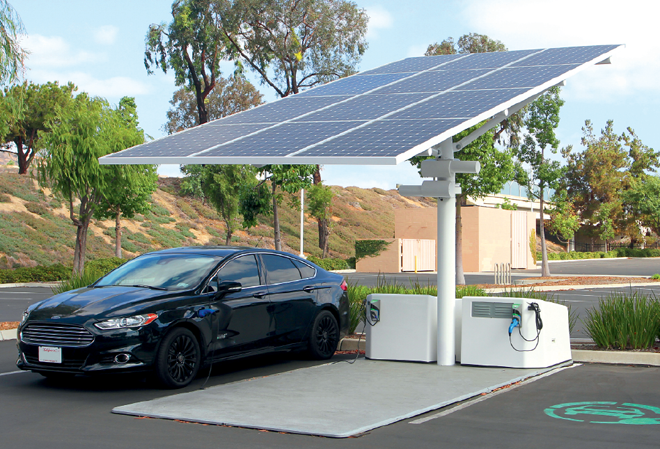
The UK’s EV infrastructure is developing quickly. It consists of quick and efficient EV chargers. The drivers of all-electric vehicles will soon experience the consequences of this trend severely. It will enable them to charge their vehicles at the local port and alleviate drivers’ concerns about range.
Here is all the information you require on ultra-rapid EV chargers in London.
What Is Ultra-Fast EV Charging?
Since they are a more sustainable option than traditional cars, electric vehicles have rapidly increased in popularity among drivers for private rental. Drivers of electric vehicles have three different charging choices. Electric vehicle drivers need an ultra-rapid EV charger.
Slow Chargers Private hire drivers and other people who frequently use electric vehicles will often have slow chargers in their houses. When compared to other charging ports, they provide nothing more than 3 to 7 kWh.
Fast Chargers are a common alternative that is currently dominating the UK market. These are typically found in parking lots where your car can be charged for 7 to 22 kWh. They provide you with a long period of time without charging.
Ultra-Rapid EV Charging: They can produce and store a maximum of 50 to 350 kWh of energy. These chargers make it simple to charge your electric vehicles because they can get it to 80 % charge in just 20 to 40 minutes. To avoid having to modify your plans while your car charges, these are primarily located close to terminals, on routes, at restaurants, retail parks, and other locations. However, the construction and maintenance of these are the most expensive. For some units, greater per kW charging is available.
Rapid charging technology is most prevalent because it operates at 50kWh. These are frequently situated close to parking spaces and retailers so that EV drivers can conveniently charge their vehicles. The vast majority of London’s private drivers use first-generation EVs, which can only charge at a speed of 50 kW, requiring close proximity to a charger. This is the second most important reason to have these.
The necessity for rapid and ultra-rapid EV chargers in London is based on the fact that the latest electric vehicles now have high charging speeds; some models need 100–150 kWh, while others need 300–350 kWh. The most frequent locations for private hire drivers must have new and better chargers so that they don’t miss out on tips or rides due to the faster-charging speeds.
London’s Need for an Ultra-Rapid EV Charger
Drivers can gain from an ultra-quick EV recharge in the following ways:

Drivers can easily fill up their cars with enough charging in a matter of minutes and then start moving with a quick charge. Range anxiety, which is one of the main reasons these drivers don’t move to EVs, is reduced by it. Their lives will be made so much simpler once they are aware of the venues for permanent charging. They will find it convenient, and drivers in London will use EVs more frequently.
Drivers will prefer an ultra-rapid charger because it gives a fast top-up and is simple to use. The ease of contactless payment is accessible to drivers. They can simply stop at the authorized charging stations, easily charge their cars, and then pay. There is no requirement to download software, create an account, sign up, etc.
A future pro of EV charging facilities: As technology advances and development continues, London will have more economical, rapid, and ultra-rapid charging points installed around the city.
Here Are the Locations of London’s Ultra-Rapid Charging Stations
In order to facilitate usage, these ultra-rapid chargers have been positioned in strategic places:
1. Shell Recharge Fulham
It just started operating in Fulham, London, UK, in January 2022, and it currently has 175kW charging stations. There is room for up to nine vehicles. It’s an excellent location because it gives the drivers a place to settle down. The price per kWh is 49.
2. BP Hammersmith Flyover
The UK’s first and only ultra-rapid charging station opened in 2019 at the BP Hammersmith Flyover. It now includes a 50kW fast charging and a 150kW ultra-rapid charging station for all drivers after winning the title of “charging destination of the year” in 2020. The price per kWh might range from 38P to 50P.
3. MFG Putney
The best EV charging station in London belongs to MFG. It stands out because it is a dual station with both a traditional petrol pump and ultra-rapid charging. It features eight 150kWh ultra-rapid chargers.

Electric cars and plug-in hybrids are relatively new in the market. The fact that they require electricity to charge means that new infrastructures must be put in place. Consequently, during the past few years, EV charging stations have been diligently being established across the UK by electric vehicle manufacturers. So, if you drive an electric PCO car or are just interested about EVs, this site will address all of your concerns. For PCO drivers, the full electric car charging instructions is given below.
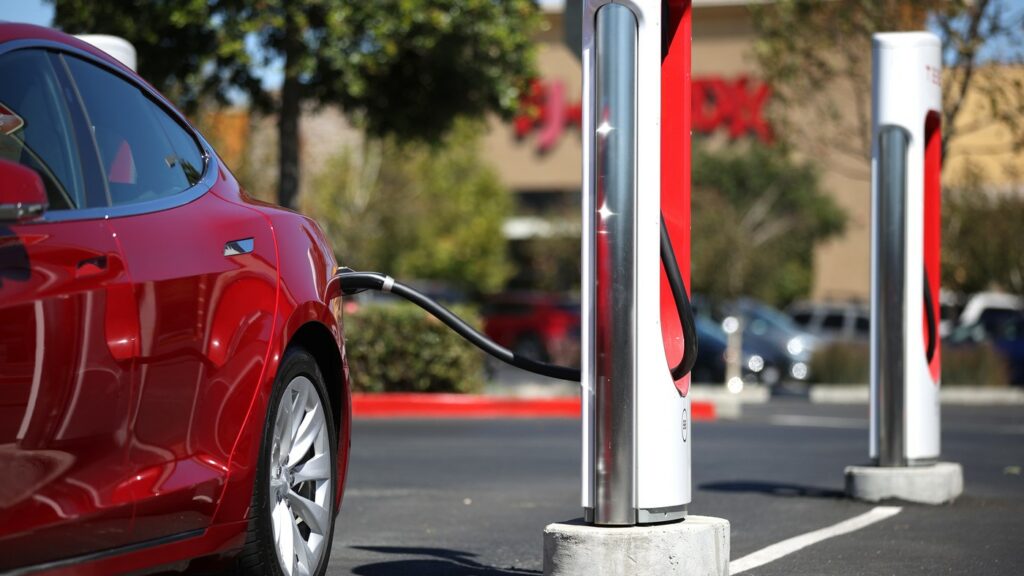
EV Charger Types for PCO Drivers
An electric PCO car’s charging process is different from a diesel or gasoline vehicle’s fueling procedure. The type of EV charger, combined with its design, connector, and plug of your electric PCO vehicle, determine the charging station that you can use. Despite the fact that initially this could appear difficult. It all becomes second nature to a PCO driver with time and experience. We’ve created a list of the accessible EV chargers, along with each one’s benefits and drawbacks, to assist you:
1- Ultra-Fast Chargers
Ultra-Fast Chargers have just recently entered the market for EV chargers. Therefore, they might not be appropriate for all kinds of electric PCO cars, especially if you drive an older model. For PCO drivers who drive the Tesla Model 3 or the Volkswagen ID.3, however, Ultra Rapid EV Chargers are a useful solution because they now make it possible for them to charge their electric PCO vehicle in just 20 minutes. It is compatible with charging cables CCS and CHAdeMO and has a power range of 150kW to 350kW.
Ultra-Fast EV chargers are used by Shell Recharge and BP Charge master, respectively. A PCO driver will pay 40p per kWh to use an Ultra-Fast Charger.
Pros:
Cons:
2- Fast Chargers
Looking for the fastest EV charger available? The best and most efficient solution to all of your electric PCO vehicle requirements is the rapid charger. Rapid Chargers have become very popular in London and are accessible to PCO drivers worldwide due to their quick charging times.
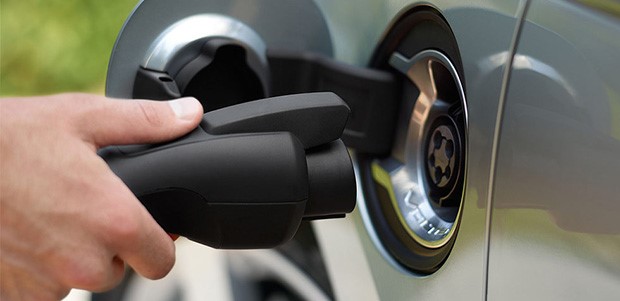
Rapid Chargers have a 50kW capacity. Rapid EV Chargers are the ideal option for your daily demands because they can recharge your car in 30 to 45 minutes regardless of the electric PCO car model you have. For Type 2, CCS, and CHAdeMO, rapid chargers are acceptable. These charging stations are provided by Shell Recharge and BP Chargemaster, two different companies. You will be required to pay 40p per kWh in order to use a rapid charger.
Pros:
1. Rapid chargers are among the fastest charging options available to PCO drivers.
2. You are able to use these charging stations both during breaks and while at work.
3. There are already more than 600 Rapid Charge stations in London.
Cons:
1. According to some reports, rapid chargers have the potential to accelerate the deterioration of the batteries in your electric PCO vehicle if they are used regularly.
2. It is a more expensive choice.
3. Despite its popularity, there aren’t enough Rapid Chargers available to meet the demand. Moreover, switching EV Charger providers could have a cost its own.
3-Fast Chargers
Fast Chargers for your electric PCO car are conveniently located close to supermarkets, local communities, and other authorised parking areas. Your electric vehicle may be recharged in 3 to 8 hours using their 7kW to 22kW capacity.
Type 1 and Type 2 charging cables are all compatible with fast EV chargers. GeniePoint and Source London both utilise them. The cost of using a fast charger is 39P per kWh. Keep in mind that the charging speed can change based on the model of your electric PCO vehicle.
Pros:
1. If you can find a charging station close to your place of business or residence, a fast charger can function well during break after driving an electric PCO car.
2. You can recharge your electric PCO vehicle when you go shopping because it can take almost an hour.
Cons:
1. Because Fast Chargers are frequently located in public parking lots, you could be charged more for parking if you stay longer than expected. GeniePoint, for instance, levies an overstay cost of £10.
2. For PCO drivers who don’t want to spend a lot of time off-road, fast chargers aren’t the best option.
4- Slow Charges
Slow chargers, also known as “trickle chargers,” are typically connected to public charging stations as lamp chargers or home chargers. A slow charger will take longer than other kinds of EV chargers to complete a single charge cycle—up to 6 to 12 hours. Therefore, whether you have one nearby or placed at your home, they make the perfect charging station.
Chargers with Type 1, Type 2, Commando, and 3 pin connectors can be used with slow chargers. The Slow EV chargers are available at charging stations that are operated by Source London and Ubitricity. You will also be charged between 19P and 24P per kWh for using a public slow charger.
Pros:
1. Slow chargers are more affordable.
2. They are ideal for PCO drivers who want to charge their electric PCO cars overnight.
Cons:
1. A slow charger could take up most of your time. As a result, it isn’t referred as a solution for between-work recharging for PCO drivers.
2. There’s a chance the associate parking spot won’t always be open. Therefore, if you exclusively use sluggish chargers, you might not be able to develop a sustainable charging strategy.
How Long Will It Take Your Electric PCO Car to Charge?
As a general guideline, divide the vehicle’s battery capacity by the KW speed of the EV charger to determine how long it takes to recharge your electric PCO vehicle.
For example, the renowned Kia e-Niro has a 64kWh battery. As a result, the formula indicates that it will take 64 kWh/7 kWh = 9.14 hours to reach a full charge when using a 7 kW fast charger.

As a PCO driver, you must practice extreme caution to make sure you adhere to all TFL requirements and provide an excellent experience to your passengers in order to receive positive feedback and recommendations.
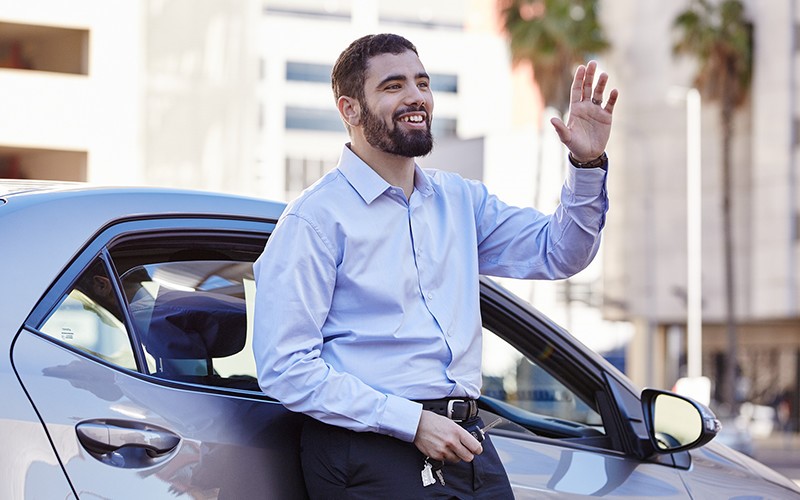
We have provided some helpful dos and don’ts as a PCO driver that you should practice in order to assist you to become a better PCO driver.
A PCO Driver’s Dos and Don’ts
The Dos
1. Give Your Passengers a Comfortable Ride
As a PCO driver, you will frequently deal with clients who are simply attempting to travel from point A to B. These customers will also be the ones providing you reviews and advice for a fantastic travel experience if you play your cards correctly. As a result, you should always make an effort to ensure that your passengers have a comfortable journey.
Make sure the customers don’t leave anything left in the car and that the backseat is clean. Make sure your vehicle is clean and has a pleasant scent. If they are interested, start a discussion with them and try to be as courteous as you can. Do they want to play the music of their choice? Help them put their luggage in the trunk if they have anything. Just be considerate the entire trip.
2. Observe Breaks
Make sure you take sufficient breaks during the day to stay focused. Driving demands a lot of attention and mental clarity. Therefore, if you start to feel a little fatigued or worn out, stop for coffee in between rides so you can relax for a while.

Taking breaks while driving at night is especially crucial because you’ll be driving in the dark and need to spend close attention to the road. You will end up preventing wrong turns, mishaps, and accidents while giving your eyes and mind some much-needed relaxation.
3. Frequently Clean the Windshield and Side Mirrors
If you work as a PCO driver, you should establish a usual schedule for cleaning your windshield and side mirrors before your shift. By doing this, you can prevent accidents that may occur if your vision is obstructed by debris, lint, or fog on your windshield or side mirrors.
4. Preserve your car clean from both inside and out.
Keeping your car’s interior and exterior clean is another piece of vehicle maintenance advice you should put into daily practice. Your PCO vehicle’s exterior and substructure deteriorate with time from road dirt, hot asphalt, bugs, and salt buildup. This not only damages the appearance and functionality of your car but also affects its efficiency.

To make sure that your passengers have a good time, make sure to regularly clean the exterior and inside of your car and wipe the seats. To get it properly cleaned, take your vehicle to a car wash every week.
5. Drive Defensively
When you see an empty road or a car moving slowly, it’s normal to feel motivated to pick up the pace. But despite how compelling the impulse may seem, resist it. Keep in mind that you are not driving alone. Your passengers in the backseat, who don’t know you well and are unaware of your driving style, are receiving a service from you.
Thus, do not overtake a car in front of you no matter how secure you might think. It would frighten your passengers and keep them alert the entire journey. Make sure you drive defensively so that your passengers may relax and sit back in the backseat without feeling constantly threatened.
The Don’ts
1. Remember to maintain your tyres
Checking your tyres frequently for damage is one of the most crucial safety precautions for PCO drivers. The middle three-quarters of a tire’s circumference should have at least 1.6mm of tread depth. Your life and the lives of your passengers are in danger if the gap is less than 1.6mm.
2. Avoid Buying a Cheap Phone.
You will constantly use your smartphone to accept ride requests while working as a PCO driver. Therefore, never invest in a cheap phone that might break you in the middle of a conversation. Invest in a high-quality smartphone with the greatest battery life available so that it will survive you the entire day. Additionally, invest in a good charging cable so you can always recharge your phone when the battery is running low.
For PCO drivers, a smartphone is essential, therefore avoid buying cheap, substandard devices. Get the best one you can afford so you can depend on it all day.
3. Remember to Check Your MOT Due Date
PCO vehicles require maintenance every 10,000 miles and a MOT every six months. Always check your mileage so that after you reach 10,000 miles, you can get your vehicle serviced. Additionally, keep track of the last time your PCO vehicle had a MOT so you can schedule another appointment for it after six months.
This would make sure that you don’t have to stay off the road or work fewer hours in order to do these tasks.

We normally encourage people just starting out in the mini-cab business to rent a mini-cab before purchasing one to help them adjust to a new profession and save the upfront cost of obtaining a PCO licence. Any vehicle you utilise for private rentals must be registered (PHV).

For a while after that, you can either keep driving your current vehicle or buy a new one. However, new laws have been implemented that set age restrictions on vehicles as follows:
A car with an existing PHV licence would only have a respectable amount of time remaining in it to operate as a mini-cab once it reached its tenth year, so a car with a “05” licence will only be licenced until 2015.
All PCO vehicles, regardless of age, must meet the aforementioned requirements in addition to being efficient. In general, you must go through a process to prove your car has no major problems in order to obtain a PCO licence for it. What you need to perform as part of the process is as follows:
PHV registration
You must acquire a PHV licence before renting, purchasing a new, or purchasing a used vehicle to work for a PHV operator. Therefore, it makes sense to buy or lease a vehicle that has a current PHV licence. As a result, you can expedite the process more successfully.
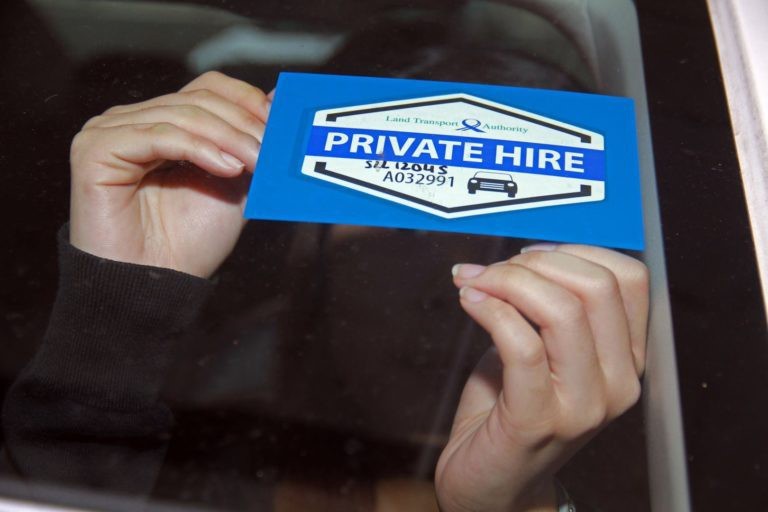
Be aware that many people, particularly newer members, may misinterpret the procedure and believe that they are automatically qualified to work for a rideshare app as soon as they have a PHV licence. The key issue is that your car receives a PHV licence, which does not specify your driving abilities. You must next proceed through a few more hurdles.
There are therefore three options from the perspective of the car.
Thus, investing in a brand-new vehicle would allow you to operate as a private hire driver for the complete ten years. You’ll undoubtedly record some significant mileage, which will result in a sharp decline in the selling price of a new vehicle. It makes sense that all present vehicles would ultimately be phased out and that all PHVs will be no older than five years old.
Who should make a PCO licence application?
Anyone who has legal authorization to work in the UK, a valid UK driver’s licence, and at least three years of driving experience is eligible to apply for a PCO licence. Even though you might still need to register for more certificates, you will have quick access to them.
It can be stated that renting would be the greatest option if you couldn’t afford to buy a brand-new car. More information on PCO vehicles will be provided in the sections that follow.
PCO licence
What is a PCO licence?
Public Carriage Office, the department of transportation in London, is simplified as PCO (TfL). The PCO licence is a crucial document that enables you to operate an Uber or other ride-sharing service in London.
Important: PCO and PHV licence are frequently misinterpreted. Even though their meanings are identical, today’s PCO and PHV licences refer to the driver and the vehicle, respectively. Both can be utilised independently of one another and, in general, share the same objectives.
What documents are required to obtain a PCO vehicle?
When you bring your vehicle in, you will need to provide the first documentation listed below:
PCO Car
What kind of vehicle can I use as a PCO driver?
The vehicle must meet the following requirements in order to obtain a PHV licence:
Driving a PCO would not require you to be the driver of the car you’re using. You can drive as long as your PHV licence is current, you have insurance, and you pay for it.
Where can I rent a car at PCO?
It takes a lot of administrative effort to keep the car compatible with the rules and the documentation. It requires time and effort that you would prefer to put toward what you are most skilled at, which is driving. You can have the confidence to know you and your vehicle are still prepared for work by using PCO car rental as a solution. Your vehicle is a part of a PCO fleet that the entire staff is responsible for keeping up-to-date, so you can keep your attention on the road and your focus on progress.
The Benefits of PCO Car Rental
Many people believe that the on-demand drivers are owners of their own Uber cars and other ride-sharing services. Although it’s still possible, more and more drivers are using their personal rental cars. Consider the benefits of renting a PCO vehicle.
Advantages
MOT Test
Your car must receive a MOT (Ministry of Transport) inspection every six months as a condition of your licence. When you obtain your PCO-licensed car or even when your car receives a new licence, the initial MOT is comparable. The MOT must be less than fourteen days old in order to be accepted. During a MOT test for your car, the following will be investigated:
TFL English Language Test
Is passing the English exam a prerequisite to obtaining a PCO licence?
Yes, starting in September 2020, TFL will require documentation of your English certification.
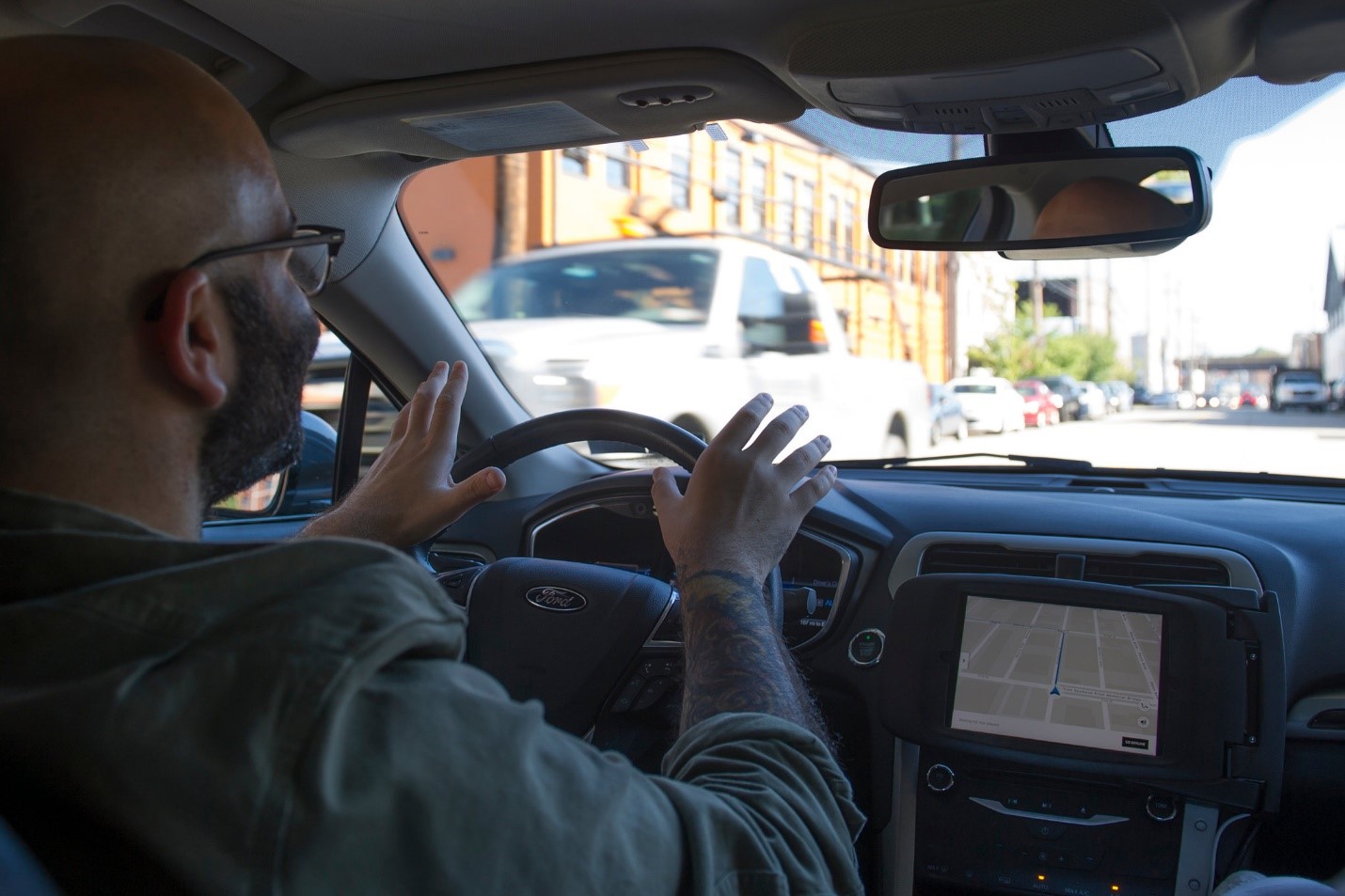
There is a record-high demand for PCO driver roles. For the comfort and freedom to work whenever and however much they want, drivers with PCO licences select these professions.
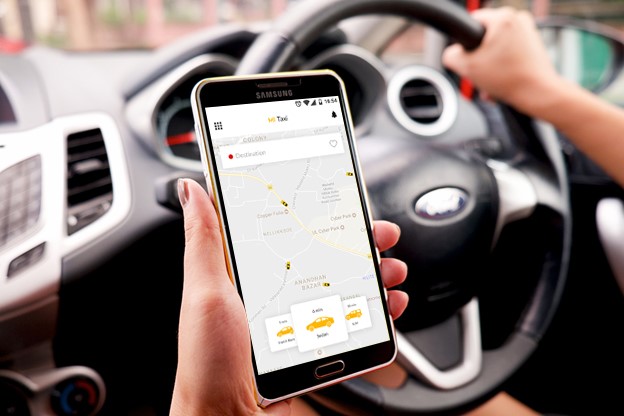
However, there are a few eligibility standards you must complete in order to be a PCO driver. These include owning a smartphone or tablet that satisfies certain requirements, which begs the question of what smartphone is best for PCO drivers.
What is the Best Smartphone for PCO Drivers?
Typically, ridesharing and delivery applications demand that PCO drivers have smartphones or tablets with a certain minimum set of features. For example, if you’re a PCO driver, you’ll need a device with iOS 9.3 or newer, Android 6.0, at least 2GB of RAM, and an 8-core processor. The screen size must be at least 4.7″.
1- Samsung
Samsung’s devices are the most frequently used Android devices internationally among all Android manufacturers. Samsung smartphones compete fiercely with Apple smartphones and have many of the same features. They are well-known for having large storage capacities and good cameras. Furthermore, since almost all apps have an Android version, you can effortlessly download any application on these devices.
On your Samsung smartphones and tablets, as long as they are operating Android 6.0 or higher, you can also download any ridesharing or delivery app. A good camera with a flashlight, a screen size of at least 4.7″, access to GPS, and other specifications should all be met.
2- Apple
The world’s most well-known smartphone brand is without a doubt Apple. Apple iPhones are recognized for being the most cutting-edge, feature-rich phones with an exceptional user experience. They are a great option for PCO drivers because they also feature one of the best battery lives in the business.

All of the smartphone criteria that these services require can be simply satisfied if you own an iPhone running iOS 9.3 or later. The cost is the only drawback to purchasing an Apple iPhone, though. The most expensive phones available are iPhones. However, as a PCO driver, you can depend on them to be the most dependable devices.
3. Google Pixel
Google has raised the stakes in recent years with its smartphones. Smartphones from Google have been a strong competitor to those made by Apple and Samsung. They participate in the severe competition because they offer all that these high-end businesses do at reasonable prices. Additionally, they include headphone ports, which is a thing that is increasingly difficult to find in contemporary Apple and Samsung phones. They do, however, feature a less powerful battery than the first two models.
Considerations for PCO Drivers When Purchasing Smartphones
A smartphone with specified features and specifications is one of the requirements for working as a PCO driver, among other conditions. Any of the smartphones from the above manufacturers will fit these requirements.
However, you need to think about a few considerations before moving through with your purchase decision.
1- Operating System
Since apps are constantly updated, there is a point when they are no longer associated with a device’s previous operating system. For instance, you must have iOS 9.3 or later and Android 6.0 or later on your phone in order to download these apps, respectively. Make sure your operating system can support these apps before you purchase a smartphone.
2-Screen
If your smartphone has a little screen, it will be difficult for you to read a map and operate the vehicle at the same time. For this reason, you should be able to read comfortably on a smartphone with a 4.7″ standard screen size. The screen resolution should also be sufficient to clearly view everything.
3- Camera
Smartphones with good cameras and flashlights are essential for PCO drivers. During the process of your work, you’ll frequently need to take pictures of delivery packages and other significant items, so you’ll need a camera that can produce sharp images.
4- Battery Life
The only true place for PCO drivers to charge their phones is inside of their vehicles because they spend so much time on the road. Your job will demand you to use your phone the most of the time, so you’ll use more battery power than normal. Therefore, having a smartphone with long battery life is crucial. Considering that you won’t be eligible to function if your battery dies.
5. Storage Capacity
PCO drivers are required to have at least 2GB of RAM since they frequently use GPS programmes that constantly transfer data. You need a sufficient amount of storage to avoid any problems during these transfers. Additionally, you will use your smartphone for calls, taking pictures, and other activities that all require you to have a respectable amount of storage.

Disclaimer: Arrow Car Hire Uk London Limited Registered in England No. 12683567. Registered Address: 5 Brayford Square, Brayford Square, London, England, E1 0SG